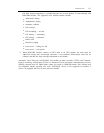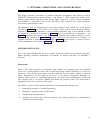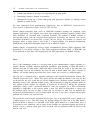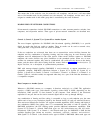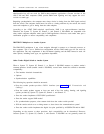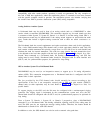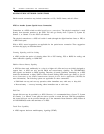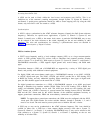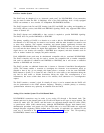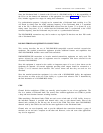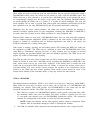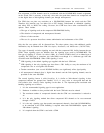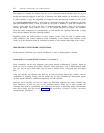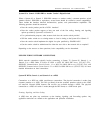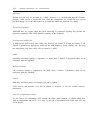
NETWORK CONNECTIONS AND CONFIGURATIONS
2-7
Screening Intra-LATA Calls
A 4ESS can be used to block within the local access and transport area (LATA). This is an
inefficient use of the customer’s trunking arrangements, though. System 75, System 85, Generic 1,
and Generic 2 special-access applications should use ARS to screen outgoing calls. By using the ARS
feature, only inter-LATA calls are routed to a 4ESS.
Synchronization
A 4ESS is always synchronized to the AT&T reference frequency (formerly the Bell System reference
frequency). Therefore, for special-access applications, a System 75, Generic 2, System 85, and
Generic 2 normally uses a 4ESS as the master clock source. A particular DS1/DMI-BOS may or may
not be selected as the clock reference to the switch, depending on the use and reliability of other
interfaces. The rules and considerations for selecting a synchronization source are detailed in
chapter 5, Synchronization of Digital Facilities.
5ESS to Another System
A 5ESS
®
is most frequently used by a local exchange company (LEC) or as a large customer-premise
switch. A 5ESS provides digital CO services, both to subscribers and customer premises switches
(such as System 75 or System 85). With respect to System 75, System 85, Generic 1, and Generic 2
DS1/DMI-BOS connections, a 5ESS supports digital ground start, reverse battery, and E&M trunk
types.
Connections between a 5ESS and a DS1/DMI-BOS are supported by a variety of 5ESS digital port
boards, and possibly with additional external equipment.
For digital, E&M, and reverse-battery trunk types, a DS1/DMI-BOS connects to an ANN3, ANN3B,
or ANN3C digital trunk port. The ANN3, ANN3B, and ANN3C provide D4 or ESF framing, ZCS
or B8ZS line coding, and only robbed-bit signaling. When connecting to these types of digital trunk
ports, the DS1 channels appear on the trunk side of a 5ESS.
For digital ground-start connections to a 5ESS, a DS1/DMI-BOS connects to an ANN4 port board
through a subscriber loop interface module (SLIM). Either D4 or ESF framing, ZCS or B8ZS line
coding, and robbed-bit signaling can be used. The ANN4 port board uses the signaling link code
(SLC) format, and a SLIM is necessary to convert between the framing format used by DS1/DMI-
BOS and the SLC format used by the ANN4. Because of the additional equipment necessary to
support ground-start connections, E&M and reverse-battery connections are preferred.
NOTE: To support these ground-start connections, the SLIM must be configured with the WP55
circuit pack. The SLIM contains five rocker switches labeled 1 through 5. Switches 1, 2, and 4
must be set closed. The unit must be power-cycled reset to initialize the unit’s circuits.
A 5ESS may or may not be synchronized to the AT&T reference frequency. This issue should be
verified. In either case, a 5ESS has a lower stratum (higher accuracy) clock than a System 75,
System 85, Generic 1, or Generic 2. A particular DS1/DMI-BOS may or may not be selected as the
clock reference to a System 75, System 85, Generic 1, or Generic 2, depending on the use and
reliability of all other DS1s.



